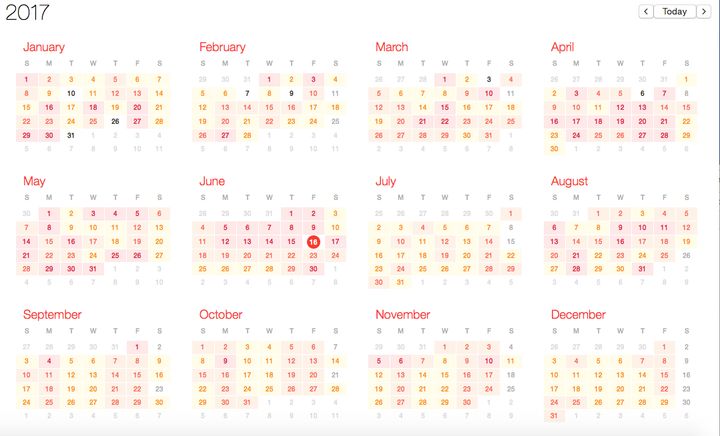
Sometimes it takes hearing the same thing a few different ways for something to sink in. Here are the three passes of the same message that’s leading me to think about my calendar and planning a little differently:
1. A truly astounding friend of mine is heading off to her major conference. She’ll be riding the success of a previous book, promoting her next book, and having many meetings as part of her leadership role in the organization. What most struck me about her plans, though, was the fact that she’s scheduling some time off at the end of the event.
2. I’ve been reading The Slow Professor by Maggie Berg and Barbara Seeber. The book has surprised me (in a good way—more on that another time). Among other things, they are concerned about faculty burnout, a culture of doing more with less, and the sense that the contemporary university’s focus on scholarly productivity may have the ironic effect of making researchers think less.
3. I recently listened to an interview with Elena Lipson, a self-care coach (I know, I know, sorry…). Though I’m a little skeptical about her job title or the idea of paying someone who isn’t a masseuse to help me relax (though maybe this is where we are, who knows!), what I found helpful from the interview was a scheduling tip she connected to the savasana yoga pose used at the end of a physical practice to “integrate” all that’s come before. She suggests scheduling empty time following business trips and conferences in order to take some time to “integrate” all that’s happened on the trip before diving into the workweek.
Though my sources here are variable, there’s a message to be found about the importance of down and off time to thinking and creative work.
Moreover, instituting this kind of practice can be done with the simple tool of a calendar. Too often, I find myself booking conference travel back to back with teaching, often running to or from the airport from my campus.
I love conferences. I love talking to smart people in my field. I love browsing the book exhibit. I fill notebooks with ideas for future classes, writing projects, collaborations.
But because of the way I schedule, much of that gets lost the minute I board my return flight and start planning the classes that have to be taught as soon as we’re wheels down. Or, at best, I get in on a Sunday and manage to throw in a load of wash before crashing to sleep.
But what if I (we) scheduled a little differently? What about building in time to reflect on what we’ve learned, to journal about future ideas, to send those follow up emails? It might be tricky. Maybe it would be better to leave the conference a day early in order to do some meaningful thinking about the experience. Maybe it means planning a really easy teaching day (an in-class video, a peer review set up well ahead of time, a guest lecture) for the return so at the very least the plane ride can still be spent in reflection rather than ramping up to the next thing.
Since we’re in the summer months, this seems a good time to stake out this precious territory in our calendars. There’s a lot that might be gained by clearing time to do “nothing.”
